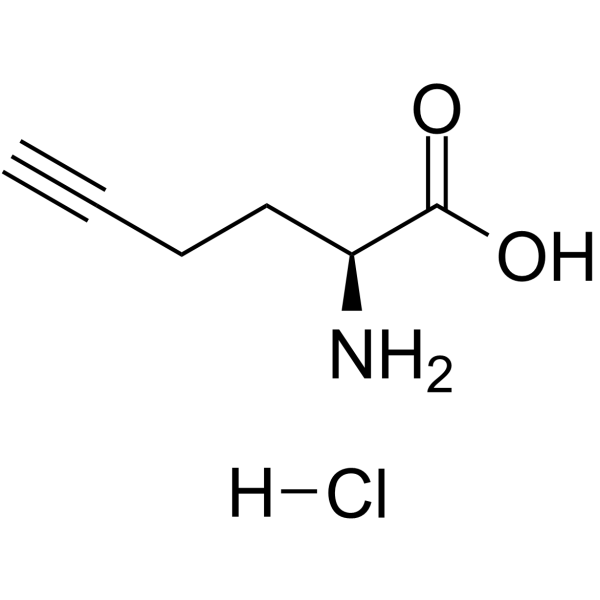L-Homopropargylglycine hydrochloride
Modify Date: 2025-08-27 11:04:38

L-Homopropargylglycine hydrochloride structure
|
Common Name | L-Homopropargylglycine hydrochloride | ||
|---|---|---|---|---|
| CAS Number | 942518-19-6 | Molecular Weight | 163.60 | |
| Density | N/A | Boiling Point | N/A | |
| Molecular Formula | C6H10ClNO2 | Melting Point | N/A | |
| MSDS | N/A | Flash Point | N/A | |
Use of L-Homopropargylglycine hydrochlorideL-Homopropargylglycine hydrochloride is an alkyl chain-based PROTAC linker that can be used in the synthesis of PROTACs. L-homopropargylglycine hydrochloride is an amino acid analog of methionine containing an alkyne moiety that can undergo a classic click chemical reaction with azide containing Alexa Fluor[1][2]. |
| Name | (2S)-2-Amino-5-hexynoic acid hydrochloride (1:1) |
|---|---|
| Synonym | More Synonyms |
| Description | L-Homopropargylglycine hydrochloride is an alkyl chain-based PROTAC linker that can be used in the synthesis of PROTACs. L-homopropargylglycine hydrochloride is an amino acid analog of methionine containing an alkyne moiety that can undergo a classic click chemical reaction with azide containing Alexa Fluor[1][2]. |
|---|---|
| Related Catalog | |
| Target |
Alkyl-Chain |
| In Vitro | PROTACs contain two different ligands connected by a linker; one is a ligand for an E3 ubiquitin ligase and the other is for the target protein. PROTACs exploit the intracellular ubiquitin-proteasome system to selectively degrade target proteins[1]. |
| References |
| Molecular Formula | C6H10ClNO2 |
|---|---|
| Molecular Weight | 163.60 |
| Exact Mass | 163.040009 |
| Storage condition | -20°C |
| MFCD31619332 |
| (2S)-2-Amino-5-hexynoic acid hydrochloride (1:1) |
| 5-Hexynoic acid, 2-amino-, (2S)-, hydrochloride (1:1) |